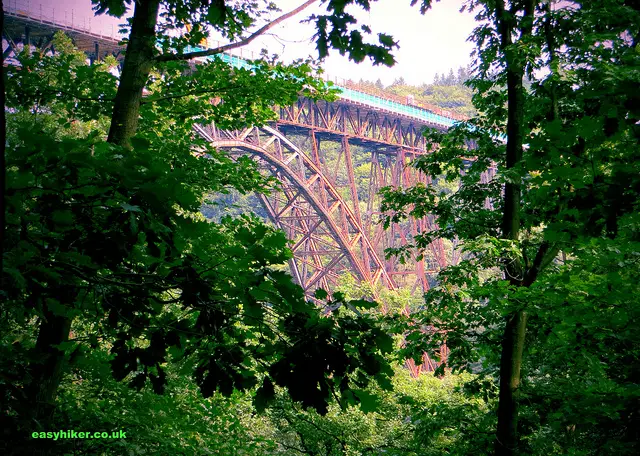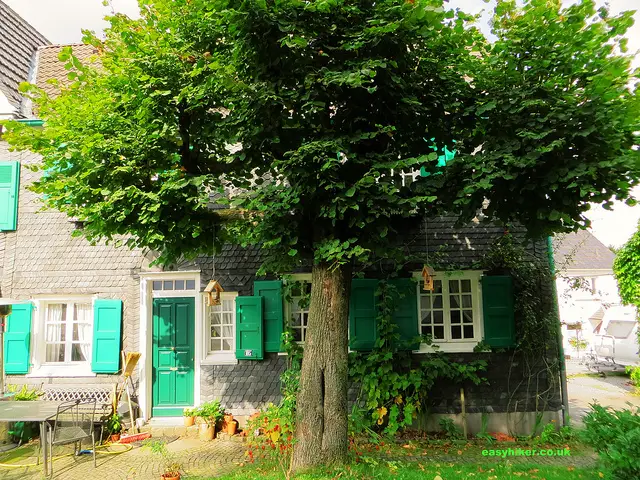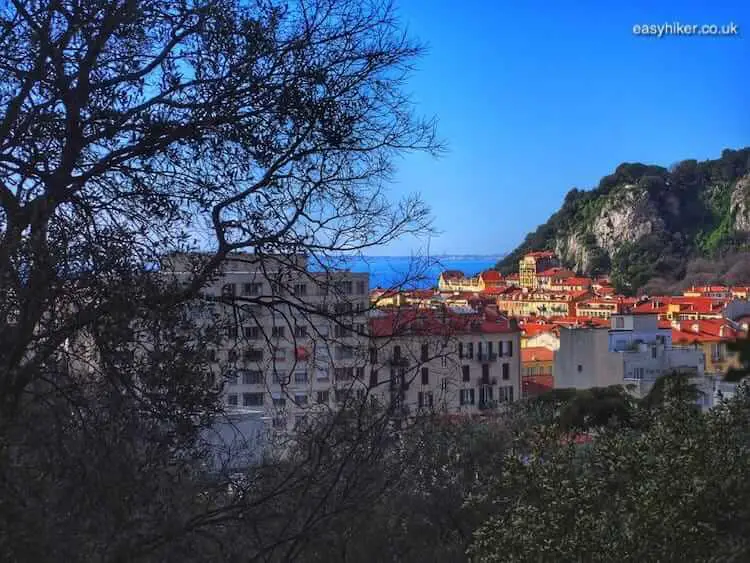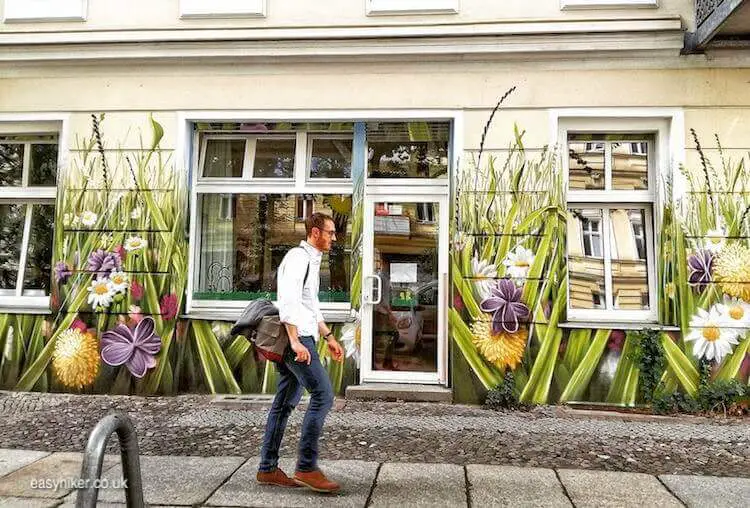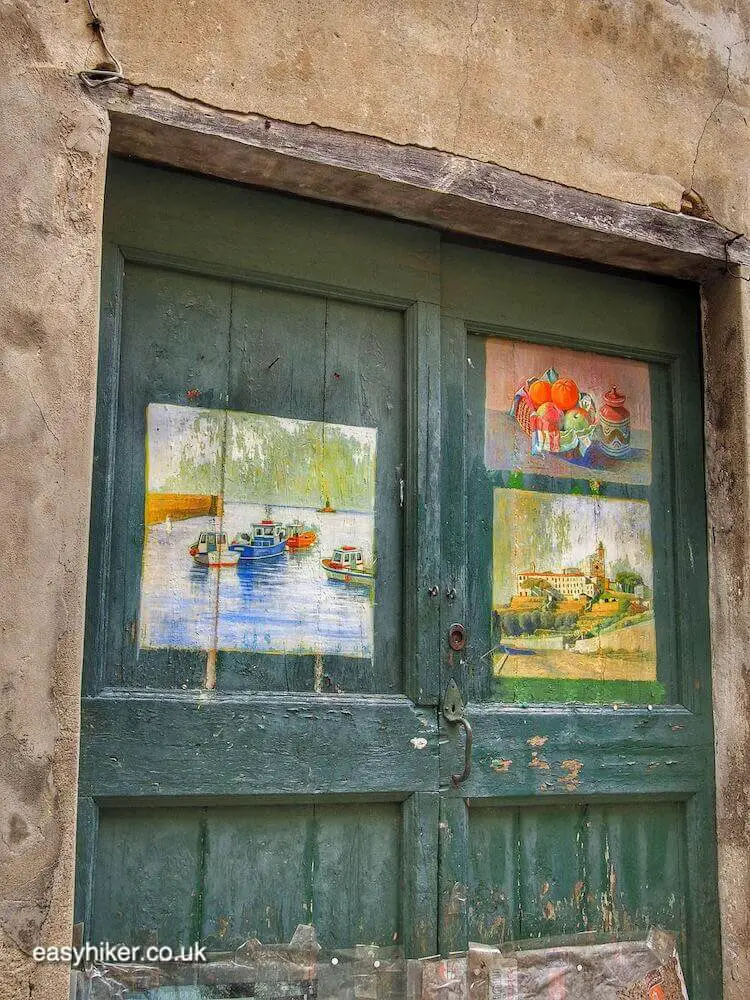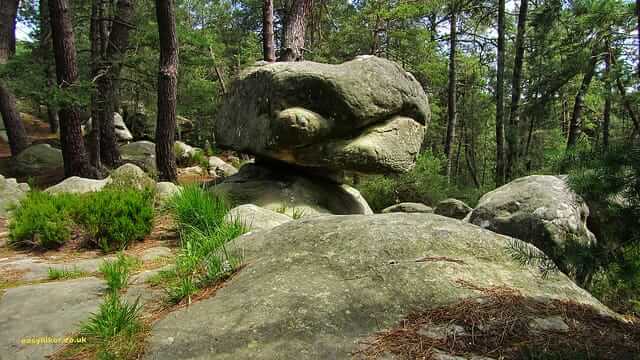Easy Hikes in Germany
A Medieval Castle Called Castle
To wrap up this summer’s series of walks in North Rhine Westphalia – very nearly in time for Christmas, come to think of it – today’s post is dedicated to another neglected bit of the German countryside, the “Bergisches Land” in the east of NRW state.
The trail leads from the train station of Schaberg to Schloss Burg (English translation: Castle Castle), a taut 6.5 km, short but full of classic German motives: we walk from a technological monument to a medieval castle, passing through plenty of dark and green forests in between.
The most difficult bit of this walk comes right at the beginning: this was the part where we had to get to the trailhead at Schaberg.
Schaberg was the nominal start of the walk, but when we arrived, finally, it felt more like its half-way stage.
In theory it’s easy, because Schaberg is a train station, but in practice, it is quite difficult because the track is under construction, and the replacement bus from Remscheid does not actually stop at Schaberg station at all, only passing by on the nearest busy street.
If you want to do this walk, alight at Krahenhof Schule, walk back the high street and turn left, following the signs to Schaberg.
When the bus driver told us that the walk from the stop to Schaberg station was “long” (“3 km”, he estimated when I was asking how long was “long”), my heart sank, not so much because of the distance as such but mainly because I saw us already on the hard shoulder of a busy country road. In the end, though, it was not nearly as bad.
For one, the distance was more 1.5 than 3 km, perhaps even less, and for another, because the walk was rather enjoyable, leading past charming old-style homes and their massive gardens, and turning out to be a pleasant opener for the rest of the hike.
From Schaberg station, follow the X- and S-trail to Müngsten Bridge, the highest railway bridge in Germany, which spans the river Wupper at a height of 107 metres.
It was formerly known as the Emperor Wilhelm I Bridge, and it is said that Wilhelm II – that’s the Kaiser Bill you know, the one with the jolly moustache – boycotted the opening ceremony because he was huffed that the bridge was named after his late grandfather rather than for himself. (The bridge is currently under construction and will probably remain so until June 2014 – by which time Schaberg station will also reopen.)
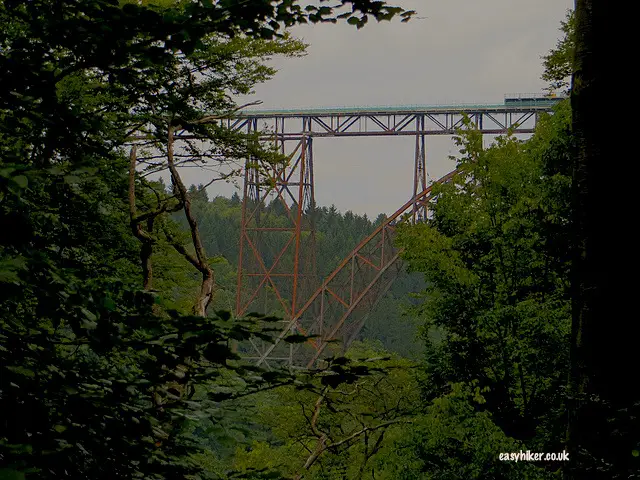
Walk past the bridge and then just follow the Bergischer Weg trail in the direction of Burg. This is a fairly easy walk and one that provides a good blend of forest and open areas.
Schloss Burg (the medieval castle called Castle) at the end of the trail, has roots that reach back into the 12th century, although in its present state, it is – at the risk of disappointing you – largely a 19th century concoction, built to resemble the mighty castles on the Rhine. (I think it does a pretty good job.)
At any rate, the outstanding feature of the castle, from a visitor’s point of view, is the cable car that takes you all the way up from street level.
It’s more cable than car, as a matter of fact, essentially just a “ski lift” where you sit on a bar and can watch your feet dangle freely over the valley underneath. This is not normally my kind of thing at all, but it turned out fine in the end and was less of a white-knuckle-ride than feared.
Back at street level, catch the 683 bus to Solingen. One thing you have to consider: Solingen has two large stations, Solingen Mitte and Solingen Hauptbahnhof, and whereas the first is located near the centre of town, only the second is directly connected to the national train network. There is, however, a frequent train service that links the two.

